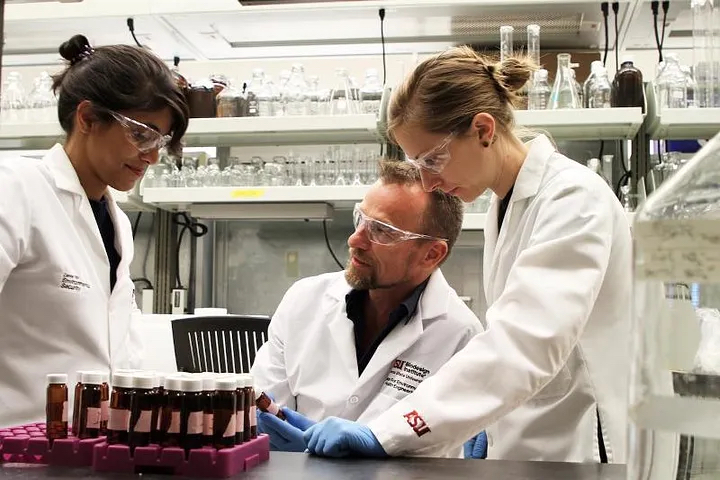Tempe, Arizona, USA
Project Type:
Communications, Cross-Sector, Health & Wellness, High-Performing Government, Infrastructure
2023 Platinum Certification
- Launched Vision Zero, a data-driven traffic safety initiative with a goal to achieve zerofatal and serious injury crashes. The Vision Zero task force is composed of over 50 stakeholders including city departments (police, transportation, fire) and community stakeholders (Arizona State University, school districts, public health agencies) that conducted an analysis of crash data for the years 2012 through 2017. Using that data, the task-force created 37 transportation safety strategies, including the creation of four safety corridors based on statistical analysis of a higher propensity for collisions, plans for new road infrastructure, and community outreach plans.
- Uses a performance-led budget process based on metrics, and resident and business satisfaction surveys. For example, following an increase in emergency service calls in the Salt River Bottom, an area with significant natural hazards and a large homeless population, an Incident Management Team was launched. In 2023, the City achieved several of its goals, including 66% of people engaged accepting shelter services and 52 tons of debris and over 3,200 tons of vegetation were removed. Based on these initial results, new, recurring funding has been allocated to support the City’s high priority “community health & safety” metrics.

2020 and 2021 Gold Certification
“I am enormously proud that our city has achieved Bloomberg Philanthropies What Works Cities Platinum status. This award shows our community that we are leaders in using data to guide our community’s future and make informed decisions. We can show people that our city has saved time and money and has been able to benchmark progress to our goals because of our commitment to data.”
Compiled data from the city’s sewage system monthly to track community drug use patterns and understand the depth of opioid use.
Using this data, monitored areas with high opioid use and deployed emergency response resources and abuse prevention interventions to hotspots accordingly.
Utilized similar wastewater testing data and tracking methods to monitor COVID-19 levels and identify outbreaks.
The Desert City’s Approach to Data
Like so many other cities in the country, Tempe, Arizona has been deeply affected by the opioid abuse crisis. The desert city of nearly 200,000 is part of Maricopa County, Arizona’s most populous area. This county also has the highest number of opioid-related deaths in the state.
As this public health emergency became more devastating in Tempe and around the country, Tempe’s leaders realized they needed to step up in two ways. First, they needed to be transparent about the severity of the problem facing the community. Second, they needed to create innovative solutions to help stem the opioid epidemic.
In 2018, the Strategic Management and Diversity Office, in partnership with ASU’s Biodesign Institute, submitted a proposal to the Tempe City Council Innovation Fund. The proposal focused on using wastewater to track the presence of opioid metabolites at the community level. City leaders supported the idea with innovation funds and began a partnership with ASU to tap this unlikely resource for data and to better inform decisions. Today, Tempe is on the cutting-edge of opioid abuse prevention work in the United States and has expanded this partnership to gather data on the presence of COVID-19 in the community.
“Cities may not want to call attention to opioid overdoses or abuse in their community,” said Wydale Holmes, a strategic management analyst in the city’s Strategic Management & Diversity Office.
“In Tempe, we’re courageously saying, ‘Yes, we have that, but we’re also doing something about it.’
It turns out that sewage offers an abundance of public health-related data — including a community’s drug consumption patterns. Tempe leverages its wastewater to identify areas of the city with elevated levels of opioid compounds — and then deploys emergency response resources and abuse prevention interventions to hotspots accordingly. All of this aligns to one of Tempe’s performance measures: ending opioid-related abuse and misuse by 2025, as measured by the percentage of 911 calls likely related to the drugs.
“Tempe is committed to data-informed community solutions. This first of its kind city model using wastewater-based epidemiology data informs strategic policy and operational decisions to advance community health.”
It’s great to have data, but if you’re not doing anything with it or connecting it to resources and strategies for change, then it’s just information.”
A New Diagnostic Matrix
Testing wastewater for real-time information about key markers of public health — everything from viruses to food contaminants to drug compounds — has been around for decades. But the approach is relatively uncommon in the United States. And no other city is trying to map the needs of residents around the opioid abuse epidemic in this way, said Dr. Rolf Halden, a professor at ASU’s Biodesign Center for Environmental Health Engineering.
“The United States is behind Europe. Every community that has done this work has not abandoned it, which is a testament to how well it works and how successful it is,” said Dr. Halden, who leads the wastewater data collection project in partnership with the City of Tempe.

Image courtesy of the City of Tempe.
Here’s how the wastewater analytics project helps the city identify opioid abuse hotspots and deploy resources strategically. Dr. Halden’s team takes raw sewage samples directly from five collection areas of the city for seven consecutive days each month. The scientists then test for four different types of opioids: fentanyl, heroin, oxycodone, and codeine.
After processing the samples, the ASU team hands off data to Tempe’s Enterprise GIS and Analytics team. The city can see where elevated levels of the four opioids are, and whether the opioids were metabolized or improperly disposed of. But the data contain no personally identifiable information — there is no way to tie data to specific addresses, neighborhoods or businesses.

All data are then published on the public Tempe Opioid Wastewater Collection Dashboard, created and maintained by Dr. Stephanie Deitrick, Tempe’s Enterprise GIS Manager. Through this dashboard and the Opioid Abuse Probable EMS Calls Dashboard, the information is analyzed by a multidisciplinary team, including Tempe’s Fire Medical and Rescue Department, to determine needed interventions. For example, if the data show a rise in opioid use among people under 18 in one area, the city might ramp up in-school outreach efforts. If one area suddenly becomes a major hotspot, the Tempe Fire Medical and Rescue Department can decide which emergency medical services and overdose prevention resources to move or increase to that area.
After implementing interventions, city officials can then track their potential effectiveness by monitoring changes in wastewater data alongside the EMS calls data. It’s a data feedback loop enabling the city to target its efforts — and, hopefully, prevent abuse and deaths.
“Dashboards allow people to quickly see overall trends within the data and to understand who is being impacted and where. Providing context is key when providing data to inform decision-making.”
Building a Data-Driven Culture
From its outset, the wastewater analytics project was directly tied to Tempe’s performance measure of ending opioid-related abuse and misuse. The Mayor, City Council, and City Manager set the expectation that reducing calls for opioid misuse or abuse was important to the executive leadership, and that both the goal and the performance measures supporting it needed to be shared internally with the City Council and administrative staff, community partners and externally to residents.
“Whatever we do, we always approach our employees and explain it to them and take the time to have the conversations about what we’re doing and why,” Tempe City Manager Andrew Ching said. “Every job has a purpose, and that job and that purpose exist within the framework of our strategic priorities and performance measures.”
City leaders also worked to communicate their efforts around the opioid abuse epidemic to the general public. The City of Tempe held an Opioid Town Hall in February 2019 to detail the wastewater project partnership and the types of support that Tempe provides to its residents struggling with opioids, their families and caregivers.
Anyone can visit the wastewater data dashboard and the Opioid Abuse Probable EMS Call Dashboard, designed and conceptualized by Dr. Deitrick and her team. The latter dashboard, which launched in 2018, gives Tempe Fire Medical and Rescue Department and the public a window into opioid abuse in the community. It details when calls related to abuse occurred, along with patients’ ages and genders, and the number of times Narcan/Naloxone overdose reversal medication was used during opioid-abuse related emergency calls.
Together, both dashboards inform Tempe officials’ efforts to end opioid misuse and abuse in the city, and help first responders and public health agencies on the ground see the impact of the targeted outreach and other interventions. It’s too early to tell how quickly the city will advance toward its goal — it was officially set in December 2019, when the baseline percentage of opioid-related EMS calls was 3.74 — but the right approach to data is in place to drive progress.
As the COVID-19 pandemic took hold around the world and in Tempe, city leaders have once again partnered with ASU wastewater researchers and are using this data in the same manner as the opioid data. The city is following the data to find areas of greatest need and is directing resources to help.